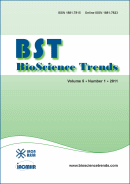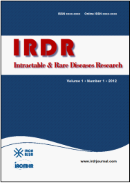Drug Discov Ther. 2018;12(4):189-196. (DOI: 10.5582/ddt.2018.01034)
Green synthesis and inhibitory effects against oral pathogens of silver nanoparticles mediated by rice extracts.
Suwan T, Khongkhunthian S, Okonogi S
Rice is staple food for people in many countries for centuries. It is therefore considered as safe and environmental friendly material for pharmaceutical formulations. In the present study, aqueous extracts of three different parts of rice grain; rice bran (RB), rice husk (RH), and rice germ (RG) were compared for their use as reducing agents in synthesis of silver nanoparticles (AgNPs). AgNPs from those three different parts of rice, RB-AgNPs, RH-AgNPs, and RG-AgNPs, respectively showed different reducing activity, which the highest capacity was RB. RG-AgNPs and RB-AgNPs showed the maximum absorption of AgNPs at 440 nm whereas that of RH-AgNPs was at 480 nm. FTIR spectra of all AgNPs indicated the presence of different functional groups from rice attached to the nanoparticles and these groups prevented the particle agglomeration. Size analysis using dynamic light scattering revealed that RB-AgNPs was the smallest particles (346.4 ± 36.8 nm) and possessed the highest negative zeta potential. Antimicrobial test showed that the AgNPs obtained from green synthesis mediated by rice extracts have great antimicrobial activity against Streptococcus mutans, the severe oral pathogenic bacteria causing dental caries. These results suggest that aqueous extracts of RB, RH, and RG have potential to be used as reducing agents in synthesis of silver nanoparticles.







